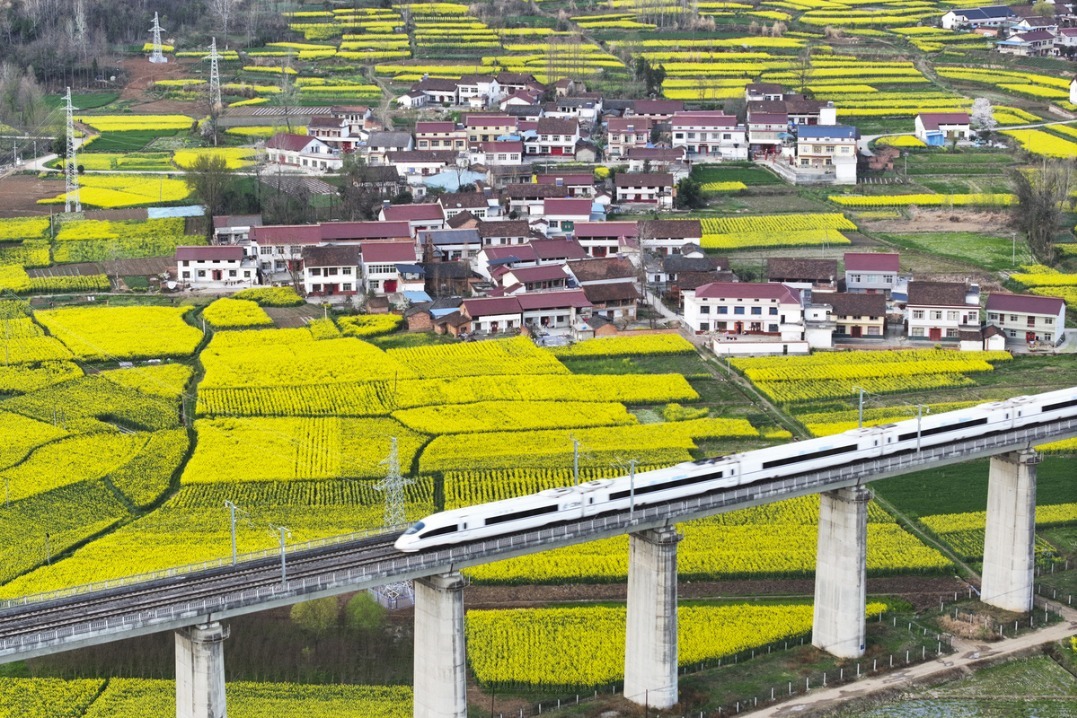Genetic sequencing to help select better potato variety
By Li Lei | China Daily | Updated: 2023-05-05 09:20
Genetic research conducted by a group of researchers from the Agricultural Genomics Institute at Shenzhen, Chinese Academy of Agricultural Sciences, has shed light on crucial genome fragments in potato crops whose mutations are likely to cause unwanted progenies in hybrid breeding programs.
The CAAS said in a release that the discovery by researchers from the academy's Agricultural Genomics Institute at Shenzhen was a "major breakthrough" for the breeding of a hugely important staple crop consumed around the world and across cultures.
Such expertise helps breeders eliminate candidate potato varieties using genetic sequence analysis and further shorten the once-lengthy plant-and-harvest selection process, a panel of breeding experts, including Huang Sanwen, who led the research, explained at a news conference on Thursday in Beijing.
The findings were published on Thursday in the scientific journal Cell.
Huang and his colleagues collected and analyzed genomes of 92 species in the nightshade family, which included potatoes and tomatoes, and the sister Convolvulaceae family.
They found that some fragments of the crops' genes remained unchanged for as much as 80 million years as they evolved, and mutations in these areas have higher chances to be detrimental to the decedents, such as reduced viability and yield, sterility, and low disease resistance.
The findings have paved the way for a novel genomics selection model — which the researchers have called an "evolutionary lens" — in which such genetic differences were analyzed in an attempt to predict potato progeny yields, plant height and other data crucial to breeding.
The paper said this model can enhance the accuracy of prediction by up to 45 percent.
"This model could help potato breeders to make more informed decisions early on, so as to lower the time and financial cost of potato breeding," the CAAS said in the release, adding that the strategy could also be employed to breed other crops.
In traditional breeding, strong parental materials were believed to have better opportunities to pass superior traits to their offspring.
However, this study has found that stronger potato varieties tended to have a higher genetic deleterious burden. The varieties carrying these hidden deleterious mutations were not suitable for breeding hybrid potatoes, in spite of their superior traits.
The study provided an alternative way to guide this development process to produce more successful potato inbred lines and hybrid varieties more efficiently, Huang said.
The research was part of the U-potato Plan led by Huang.
Potatoes are a staple food for more than 1.3 billion people worldwide, experts said, but breeding techniques lag far behind those of other popular crops such as rice, maize and wheat due to genetic complexity.
The conventional potato is tetraploid, meaning it has four sets of chromosomes. As a result, unfavorable genes can make their way unseen into the next generation, and introducing new, favorable traits proves to be extremely tricky.
Mainstream potato crops also rely on blocks to reproduce asexually, creating problems such as high storage and transportation costs, and being prone to carrying pests and diseases. To solve these problems, Huang's team launched the project and replaced tetraploid potatoes with diploid ones — with just two sets of chromosomes.
The project also replaced potato blocks with hybrid seeds using genomics and synthetic biology.
The combined changes can reduce the breeding cycle of potatoes from more than a decade to less than five years, the CAAS said.
Speaking at the news conference, Yang Zhenhai, CAAS Party secretary, said turning potatoes into a diploid crop that can reproduce through seeds was a worldwide challenge and the "jewel of the crown" of breeding innovation.























